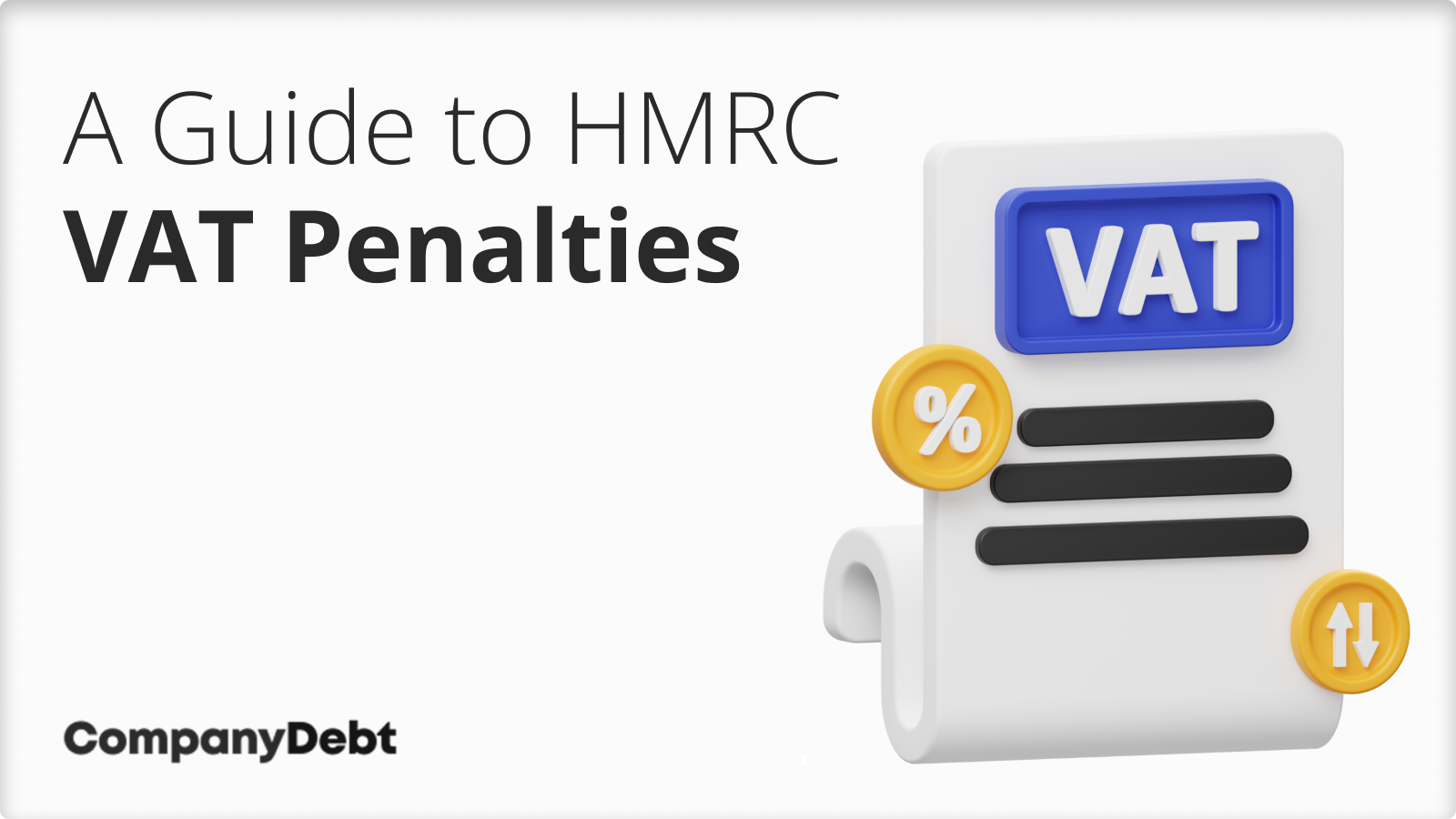
A Guide to HMRC VAT Penalties
Comprehensive guide to HMRC VAT penalties and how to avoid them.

The most common reasons for incurring VAT penalties include failing to register for VAT on time, late submissions of VAT returns, late payments, and submitting incorrect VAT returns due to either negligence or deliberate fraud.
The law treats each of these issues differently, with penalties scaled according to the severity and recurrence of the offence.
Types of VAT Penalties
Late Submission Penalties
If a business fails to submit its VAT return by the deadline, it is subject to a default surcharge. This surcharge is a percentage of the VAT due, starting at 2% and potentially rising to 15% for ongoing non-compliance.
Late Payment Penalties
Similar to late submissions, penalties for late payments begin as a percentage of the unpaid tax. These also escalate with repeated offenses, and chronic late payments can lead to more serious legal actions.
Errors and Deliberate Misstatements
Errors on VAT returns are treated based on their nature—whether they are perceived by HMRC as due to carelessness or deliberate fraud. Penalties can range from 30% of the underpaid tax for a non-deliberate error to up to 100% for deliberate understatements or fraudulent claims.
Penalty Points for Late VAT Returns
As of 1 January 2023, HMRC has implemented a penalty point system for late VAT returns, which can result in significant fines if not addressed promptly[1]Trusted Source – GOV.UK – HMRC Penalty Points System.
Under the penalty point system, your business will receive one penalty point for each VAT return that is submitted late. Once you accumulate a certain number of points, a financial penalty will be imposed.
VAT Penalty Thresholds for Late Filing
The threshold for incurring a penalty depends on how frequently you file your VAT returns:
- Quarterly returns: 4 penalty points
- Monthly returns: 5 penalty points
- Annual returns: 2 penalty points
For example, if you file quarterly VAT returns and submit two returns late, you will receive 2 penalty points. If you then file two more returns late, reaching a total of 4 points, you will be charged a £200 penalty.
How Long do Penalty Points Last?
It’s important to note that penalty points have a lifetime of two years. This means that if you accrue points but manage to file all your VAT returns on time for a period of two years, your points will be reset to zero. However, if you incur additional points during those two years, the clock resets, and you’ll need to go another two years without any late filings to clear your points.
Additional Penalties for Late Filing
If you continue to file late returns and accumulate more penalty points, the financial penalties will increase:
- Second penalty: £400
- Third and subsequent penalties: £600 each
In addition to these penalties, HMRC also charges interest on late VAT payments, which can add up quickly and put a strain on your business’s cash flow.
Appealing Against a Penalty Point
If your business has been issued a penalty point for a late VAT return, and you believe that the point was given unfairly or in error, you have the right to appeal against it[2]Trusted Source – GOV.UK – HMRC Penalty Appeal. The appeals process can be complex, but it’s essential to take action if you feel that the penalty point is unjustified.
When considering an appeal, you must have a valid reason for the late submission of your VAT return:
- Serious illness or death of a key staff member responsible for VAT returns
- Unforeseen technical issues with HMRC’s online filing system
- Fire, flood, or other natural disasters that prevented you from filing on time
- Postal delays, if you still file your VAT returns by mail
If you believe you have a valid reason for the late filing, you should gather evidence to support your case, such as medical certificates, screenshots of error messages, or correspondence with HMRC.
To initiate an appeal, you must contact HMRC in writing within 30 days of receiving the penalty point notice. Your appeal letter should clearly state your reasons for the late filing and include any supporting evidence. HMRC will then review your case and decide whether to uphold or cancel the penalty point.
If HMRC rejects your appeal, you have the option to request an independent review by a different HMRC officer who was not involved in the original decision. If you’re still unsatisfied with the outcome, you can take your case to the First-tier Tribunal (Tax), an independent judicial body that will hear your appeal.
VAT Penalties for Late Payment
If you fail to pay your VAT bill by the deadline, HMRC will charge you a penalty based on a percentage of the outstanding tax. The penalty rates are as follows:
| Days Overdue | Penalty Description | Penalty Rate |
|---|---|---|
| 15 days | First late payment penalty | 2% of the outstanding VAT |
| 30 days | Additional late payment penalty | Additional 2% of the outstanding amount |
| 31 days+ | Daily penalty on the outstanding balance | 4% per annum until full payment |
It’s important to note that these penalties are in addition to the late payment interest that HMRC charges from the first day your payment is overdue until the balance is settled.
How to Avoid VAT Penalties
It’s never wise to run afoul of HMRC’s VAT team as this is a tax they police more seriously than others. Here’s how to keep your business from incurring penalties via a simple process:
Stay organised and keep accurate records
The foundation of VAT compliance is maintaining accurate and up-to-date financial records. Ensure that you have a robust bookkeeping system in place, whether it’s manual or digital, and keep track of all your transactions, invoices, and receipts. This will make it easier to calculate your VAT liabilities and submit your returns on time.
Know your deadlines
Familiarise yourself with the VAT return deadlines for your business. These deadlines depend on your accounting period and the frequency of your returns (monthly, quarterly, or annually). Set reminders or use calendar alerts to ensure that you don’t miss a deadline.
Set aside funds for VAT
One of the most common reasons for late VAT payments is insufficient funds. To avoid this, make sure to set aside the VAT you collect from your customers in a separate bank account. This way, you’ll always have the necessary funds available when it’s time to pay HMRC
File and pay on time
Submitting your VAT returns and making payments on time is crucial to avoiding penalties. If possible, file your returns and make payments well before the deadline to allow for any potential issues or delays.
Use direct debit for VAT payments
Setting up a direct debit for your VAT payments can help ensure that you never miss a payment deadline. HMRC will automatically collect the amount due from your designated bank account on the due date, giving you peace of mind and reducing the risk of late payment penalties.
Communicate with HMRC
If you’re facing difficulties paying your VAT on time, don’t ignore the problem. Contact HMRC as soon as possible to discuss your situation. They may be able to offer you a Time to Pay arrangement, allowing you to spread your payments over a longer period and potentially reducing or eliminating late payment penalties.
FAQs on VAT Penalties
What constitutes a reasonable excuse for late VAT submission or payment?
A reasonable excuse is something that prevented you from meeting your VAT obligations on time and which was outside your control. Common examples include serious illness, IT failures during VAT submission, or unforeseen disruptions such as fires or floods. It’s important to provide HMRC with evidence supporting your claim if you cite a reasonable excuse in an appeal.
Can a business request a time-to-pay arrangement to avoid a VAT penalty?
Yes, businesses facing financial difficulties can contact HMRC to request a time-to-pay arrangement. This agreement allows the business to pay its VAT due over a longer period. If agreed upon before the due date, this can prevent the application of late payment penalties, helping businesses manage their cash flow more effectively.
Are there any specific VAT penalty rules for small businesses or sole traders?
While the VAT penalty rules apply universally to all VAT-registered entities, HMRC may consider the size and resources of a business when assessing penalties. Small businesses and sole traders can also benefit from simplified VAT accounting schemes like the Flat Rate Scheme or Cash Accounting Scheme, which can reduce administrative burdens and potential errors.
How does HMRC classify an error as deliberate or non-deliberate?
HMRC considers an error deliberate if there is evidence that the business knowingly submitted incorrect VAT information to reduce their payment. Non-deliberate errors are those that occur despite the business taking reasonable care to comply with VAT laws. The classification impacts the severity of penalties imposed, with deliberate errors attracting higher fines.
What should I do if I discover an error in a previous VAT return?
If you find an error in a VAT return that has already been submitted, you should correct it as soon as possible. If the net value of the errors is below £10,000 or within 1% of your box 6 figure (up to a maximum of £50,000), you can adjust it in your next VAT return. For larger errors, or if the error resulted in paying too little VAT, you must notify HMRC directly and may have to pay a penalty depending on the circumstances surrounding the error.
The primary sources for this article are listed below, including the relevant laws and Acts which provide their legal basis.
You can learn more about our standards for producing accurate, unbiased content in our editorial policy here.
- Trusted Source – GOV.UK – HMRC Penalty Points System
- Trusted Source – GOV.UK – HMRC Penalty Appeal








